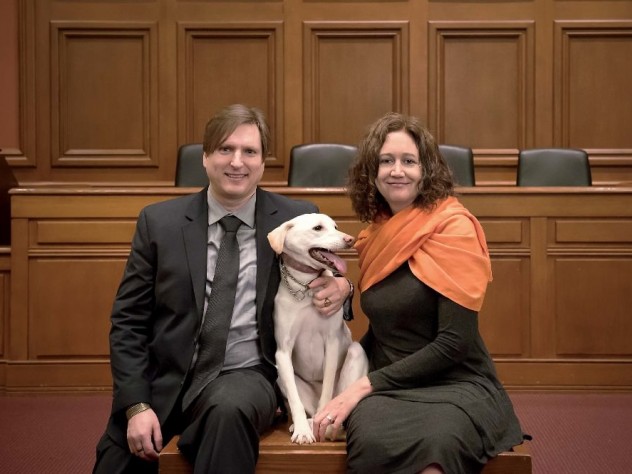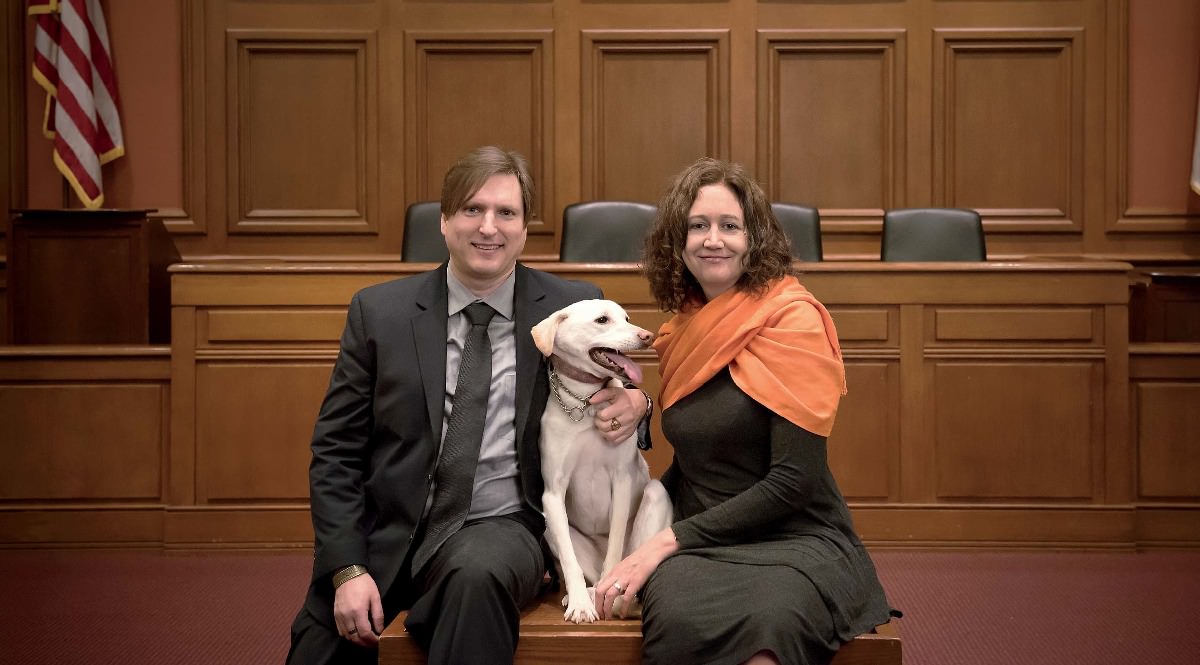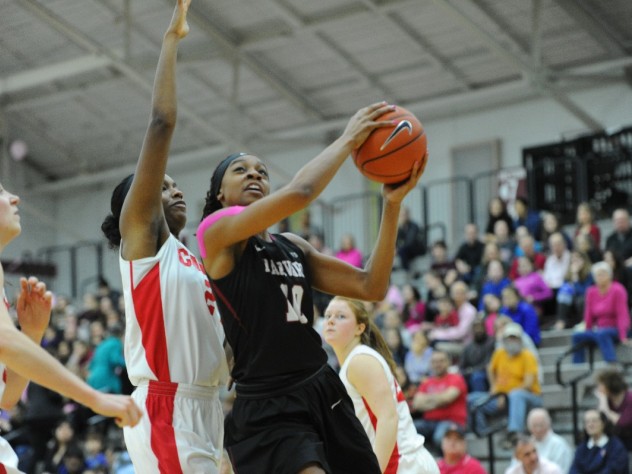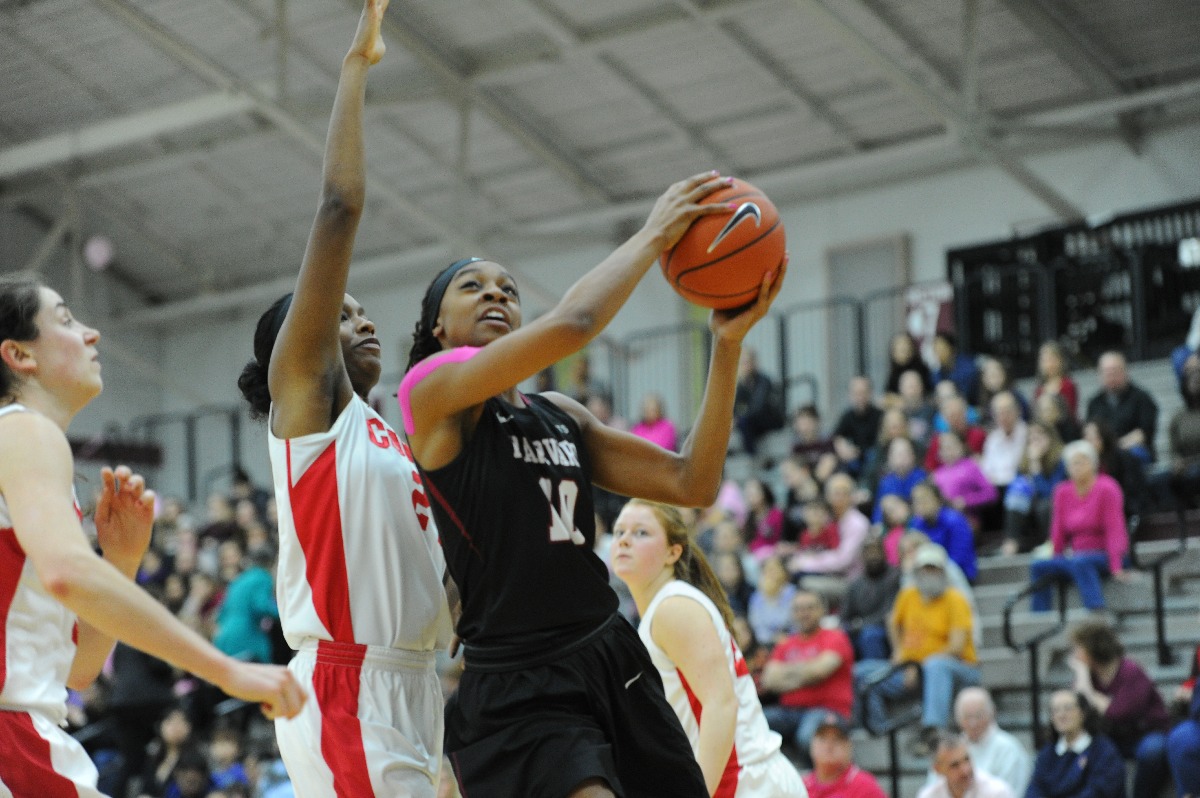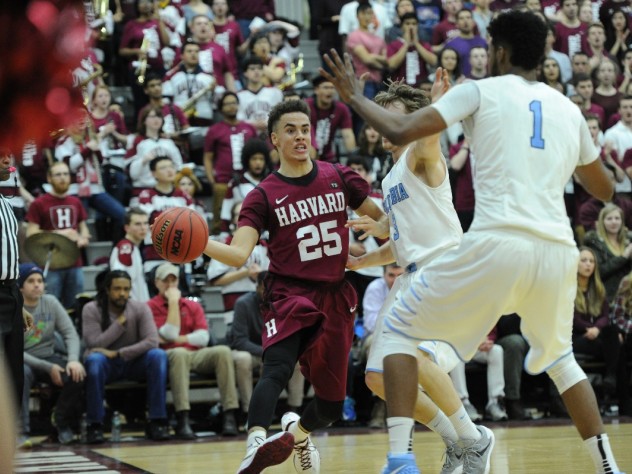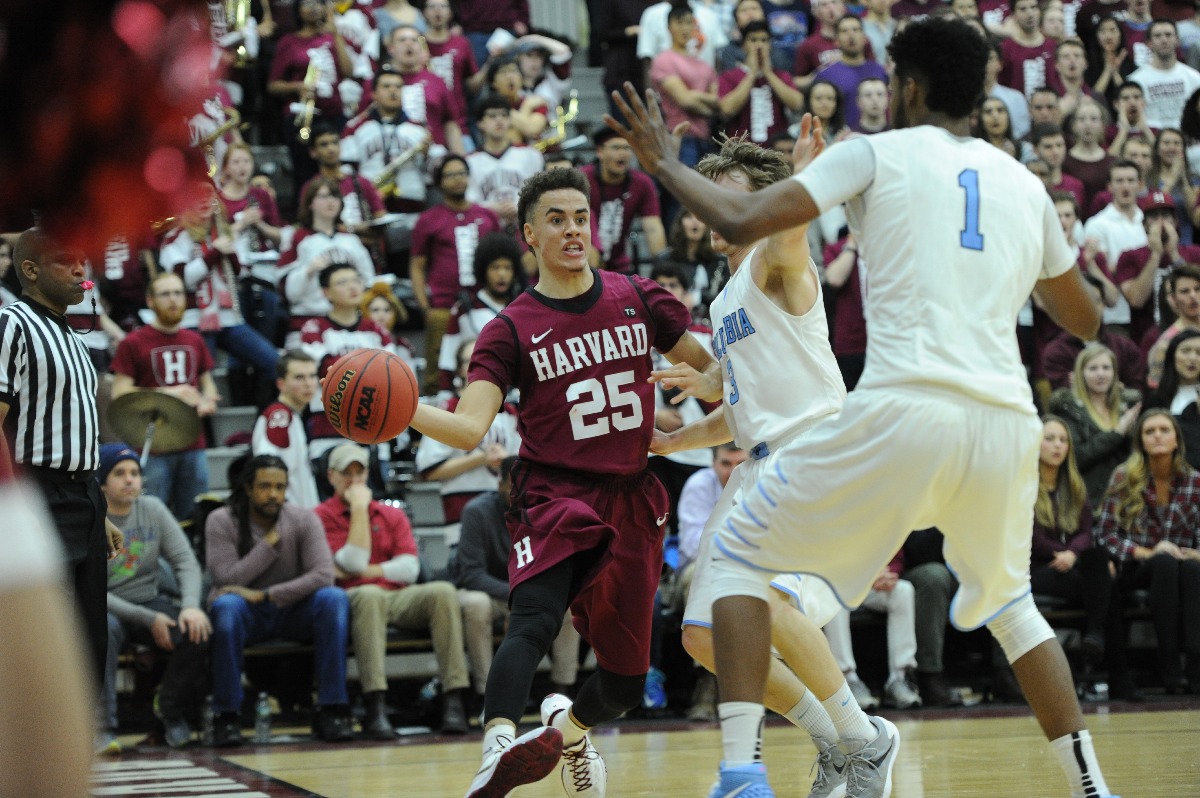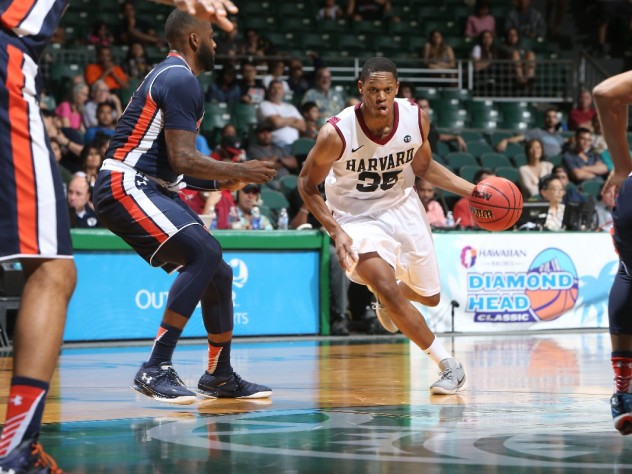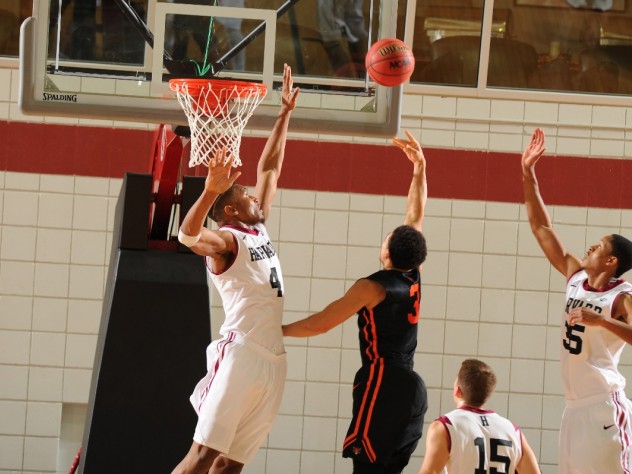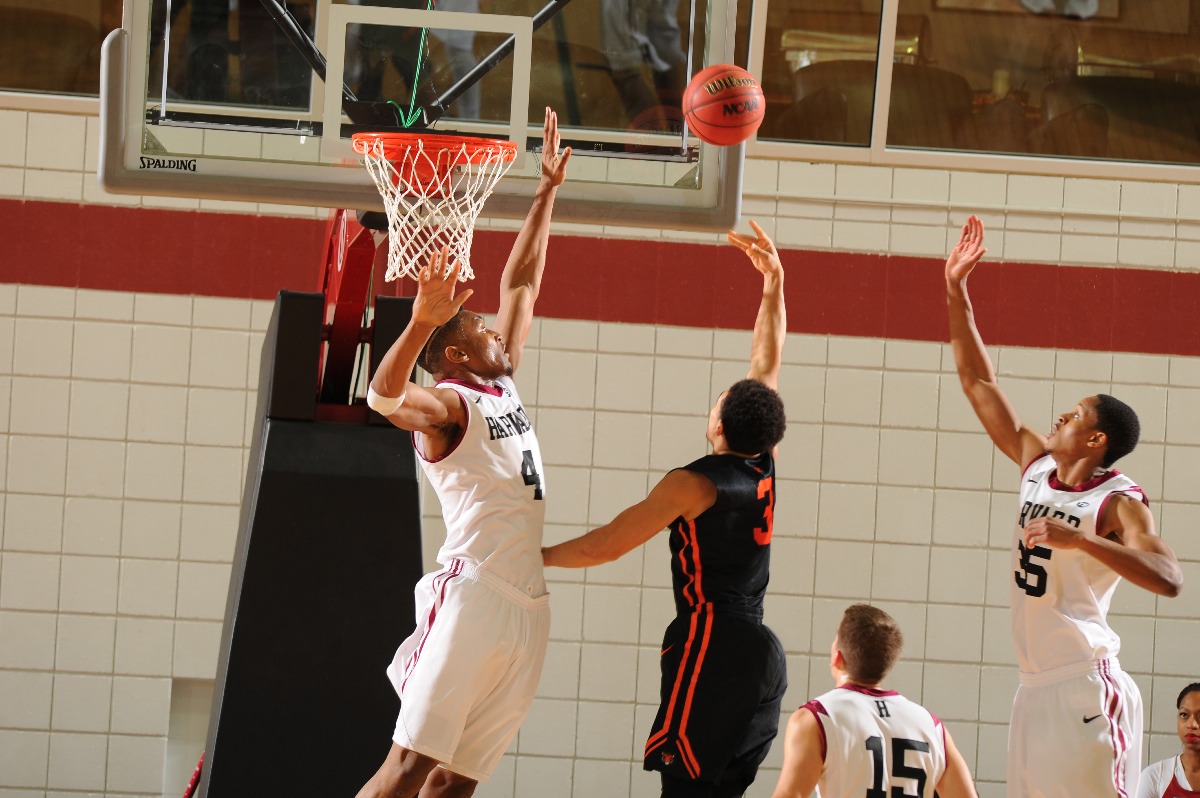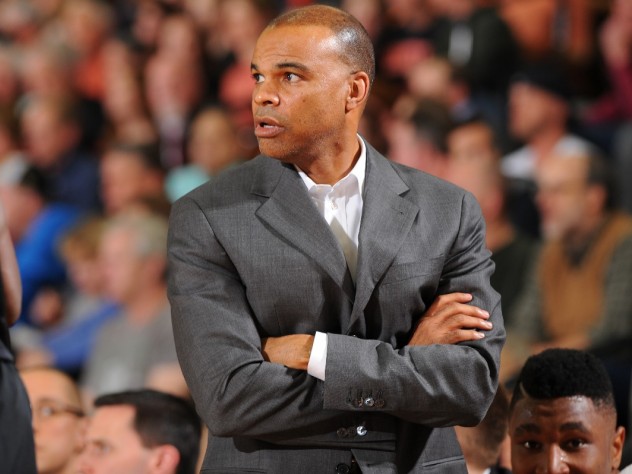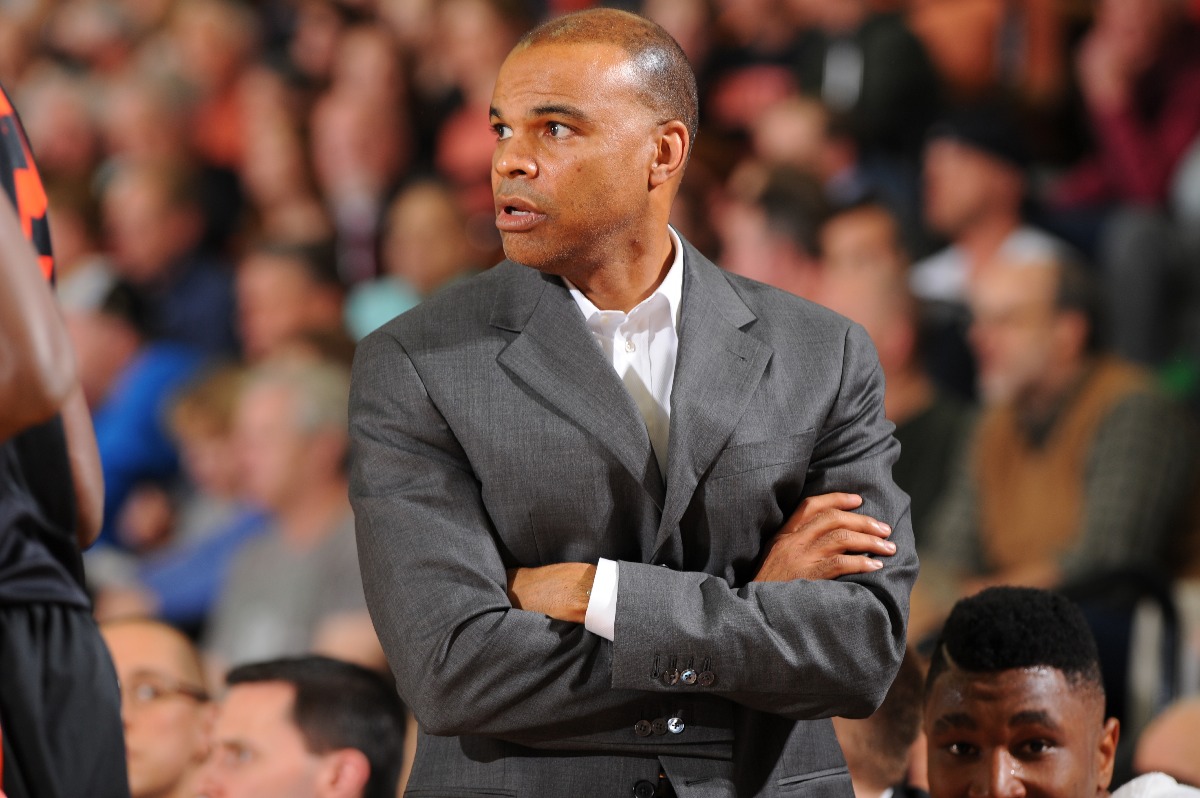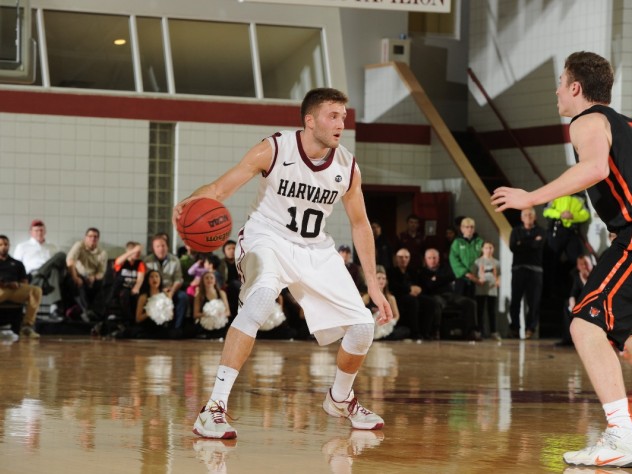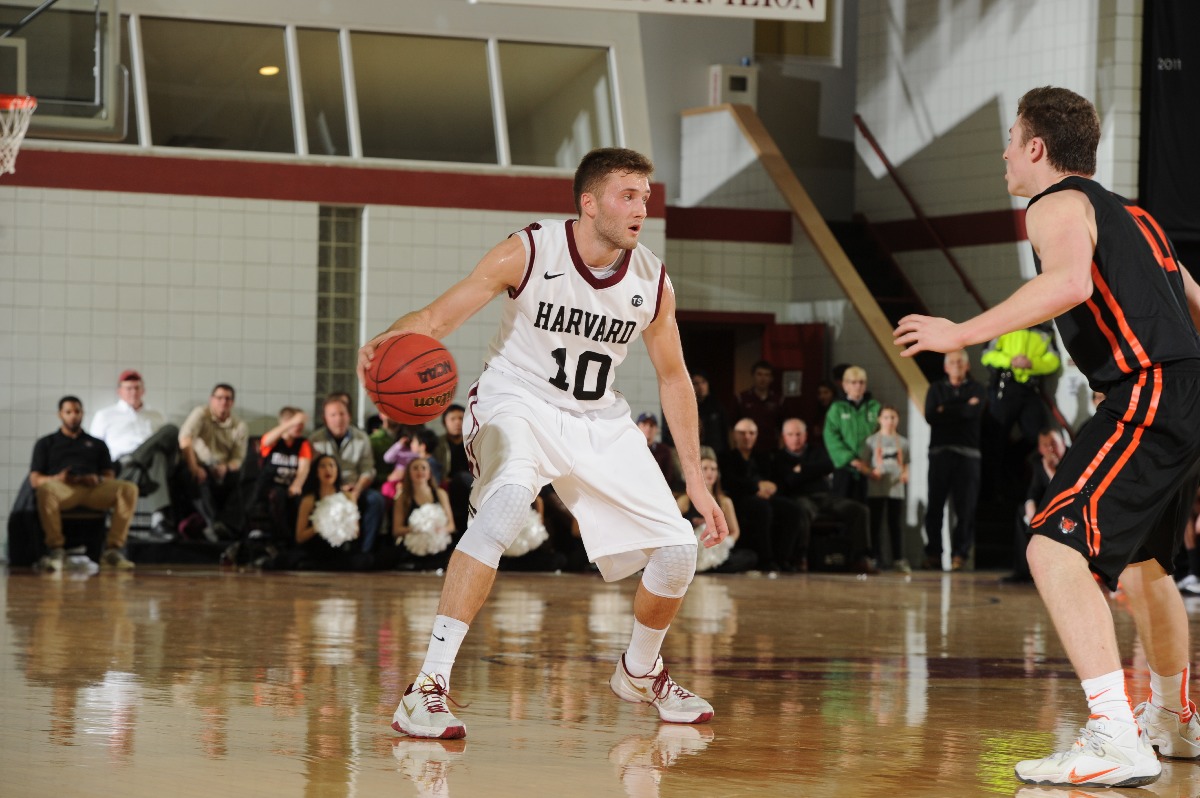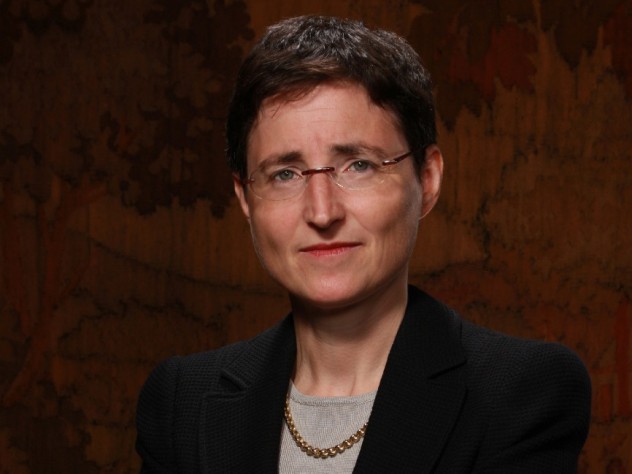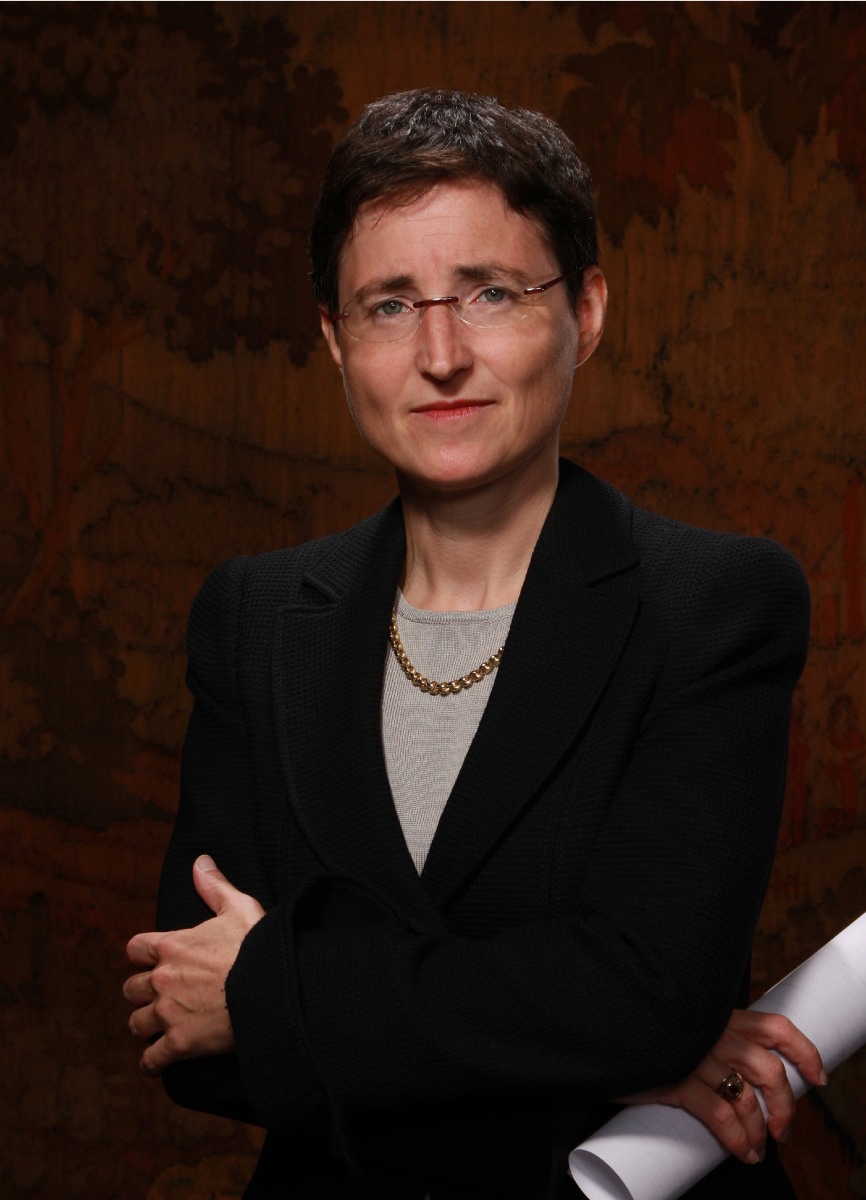No outward sign sets the pale yellow house at 31 Inman Street apart from its neighbors. Someone going on a literary pilgrimage in Cambridge might start a mile away, at 104 Irving Street, where e.e. cummings ’15 grew up; then head west, to 16 Ash Street, where T.S. Eliot ’10, A.M. ’11, Litt.D. ’47, studied Sanskrit in the attic; then westward still, to the final residence of Robert Frost ’01, Litt.D. ’37, at 35 Brewster Street—guided the whole way by blue historical markers, never thinking to glance in the opposite direction. But back in Central Square, that anonymous Victorian was the cradle of the Dark Room Collective. There, in the late 1980s, a trio of young African-American writers—Sharan Strange ’81, Thomas Sayers Ellis, and Janice Lowe—formed their own literary center of gravity. During its decade of existence, their reading series and writers’ group gathered a nebula of creative energy, a starry critical mass whose impact on American letters continues to expand.
The Dark Room Collective (DRC) was a haven for early members like writer and translator John Keene ’87, experimental prose writer Tisa Bryant, and poet Patrick Sylvain, Ed.M. ’98—a place to get together and get serious about their craft. It was “a whole ‘nother kind of education,” says Keene. “It was an immersion in a world that I only kind of glimpsed when I was in college.” By e-mail, co-founder Sharan Strange comments, “I often say that working within the DRC and curating the reading series was in many ways my true M.F.A. experience.” The reading series was also an early performance venue for then-emerging talent—from current Boston poet laureate Danielle Legros Georges to Natasha Trethewey, RI ’01, U.S. poet laureate from 2012 to 2014. Many others passed through over the years, including Aya de Leon ’08, now director of Poetry for the People at the University of California, Berkeley; poet and critic Carl Phillips ’81; visual artist Ellen Gallagher; sound artist Tracie Morris; and actress Nehassaiu deGannes. In all, the participants’ published books number in the dozens, and they have earned fellowships and nominations and wins for honors like the National Book Awards, Whiting Awards, and Pulitzer Prizes.
“Once you’re in, you’re in forever,” declares poet Kevin Young ’92 in his nonfiction inquiry The Grey Album: On the Blackness of Blackness. Young joined while still an undergraduate, as did Tracy K. Smith ’94, who remembers thinking, “Oh, wow—these young people want to be writers, and I want to be a writer, but they’re actually doing it.” She began to help with lighting at events, just to “be in that space and see what the model for this life that I wanted looked like. For me,” Smith adds, “the Dark Room was really about saying, ‘If you want to do this, this is how you do it. And don’t wait. Do it now.’”
“For me, the Dark Room was really about saying, ‘If you want to do this, this is how you do it. And don’t wait. Do it now.’”
The audience for literary writing is small, and slimmer still for poetry; by that measure, it’s unsurprising that the Dark Room remains obscure. But even dedicated readers of contemporary verse might know the Collective only as a common footnote to its alumni’s impressive biographies.
Over coffee at Lamont Library, Harvard Review poetry editor Major Jackson, RI ’07, muses, “I almost tweeted this, but am glad that I didn’t—,” then just barely hesitates before continuing, “And maybe this is no better—but I think if there were a group of poets who were white and male, or white and male and female, or white and female, there would have been a documentary made about them by now. There would be a movie about them.” Individual members have been celebrated, and the Dark Room has been loosely associated with those summed accomplishments. But, he says, the Collective has not been recognized as a whole: “Maybe we need to all grow gray hairs before that happens and America catches up.”
Snow
for Toi Derricotte
It came once, the year I turned ten.
That year they told us how we
would become women, and I began
my monthly vigil. But this was
the miracle, singular, unexpected.
The whites had finally stopped
resisting. Unwanted at their school,
we went anyway—historic, our parents
intoned, eyes flashing caution
to our measured breaths.
That first martial autumn mellowed
into a winter of grudging acceptance
and private discontent, a season of hope
shaped by fists and threats.
Then angels molted, pelting all
of creation with their cast-off garb.
We went home early, drifting through
a landscape of sudden ghosts,
the yard churning in frothy waves,
as if by an invisible tide of protestors.
What I remember most is its rude
coldness, stinging and wet. How we
mixed it with milk, sugar, vanilla,
into a poor child’s ice cream that
melted before we could savor it.
—Sharan Strange
Reprinted from Ash by Sharan Strange
Copyright © 2001 by Sharan Strange
Reprinted by permission of Beacon Press, Boston
“For Some of Us, It Was Church”
The Dark RoomCollective began with loss. As the members tell it: on December 8, 1987, Strange, Thomas Sayers Ellis, and their two housemates piled into a car to make it to Harlem by noon, for the funeral of James Baldwin. More than 4,000 paid their respects at the Cathedral of St. John the Divine. Toni Morrison, Maya Angelou, William Styron, and Amiri Baraka spoke at the service. Strange and Ellis, aspiring writers who first met Baraka at a reading at Tufts University, came at his invitation (“It was probably very clear that we needed a lesson in Who We Owed,” Ellis later reflected in an essay) and his eulogy may have left the deepest impression. Baldwin’s spirit “will be with us as long as we remember ourselves,” Baraka told the attendees. “For his is the spirit of life thrilling to its own consciousness.”
Strange had stood in the same room as Baldwin once. He had come to Harvard for a tea, and, as she later wrote in the literary magazine Mosaic, she felt “too shy to break through the thick clot of fans around him and offer the admiration he had been accustomed to for decades.” She and Ellis, their mourning amplified and made vague by distance, felt their hero’s absence as a double negative; having never known him in person, they missed him twice over. The funeral filled them with new urgency about honoring their literary ancestors while they were still alive. They began planning the following spring.
In a third-floor room of their house used for storing old photographic equipment, they’d been building a library they christened “The Dark Room: A Collection of Black Writing.” At the time, 31 Inman was alreadya communal house for artists and activists. Strange worked as a community organizer in Roxbury and as a prisoner advocate through Cambridge’s American Friends Service Committee; Ellis was a projectionist at the Harvard Film Archive and a clerk at the Grolier Poetry Book Shop.
As Ellis recalls in his 2007 poem “Spike Lee at Harvard,” the bookshop experience was fraught, and in that way, instructive: “I got my first glimpse/of the life of poetry/(through the Grolier’s/cinematic glass window).” The life on display was orderly and monochromatic: the faces in the portraits above the shelves were nearly all white. At some point, his employer wondered if the black poets should be shelved separately so customers might more easily find their work; Ellis said he didn’t think so. (An intervening line, dry but not unkind, adds: “Well, at least she asked.”)
This homogeneity reflected the shop’s surrounding scene. Literary events in Cambridge rarely featured artists of color, though a number of prominent black writers taught in the Boston area. Teaming up with Janice Lowe, a poet and musician studying at the Berklee College of Music, Strange and Ellis paid visits to such eminences as science-fiction writer Samuel R. Delany and future Nobel laureate Derek Walcott, asking them to headline a new reading series that would pair them with a younger writer. The Dark Room couldn’t offer an honorarium, they said, but they could promise eager listeners and book sales.
In their living room, “We met on Sunday afternoons after church and for some of us it was church,” Strange wrote. In fact, they did it “with chairs from the church,” as Tisa Bryant told an interviewer in 2005. “We’d get some water and some snacks and some stuff and put some music on, clean the house and everybody would come in.” Sometimes the space grew so full that not everybody could fit. Spilling onto the porch and down the street, the audience listened through open windows and doors.
As later described by poet Cornelius Eady, who was invited to be a young voice in the series’ early seasons, “It was like being part of a Sunday revival meeting. A crowd showed up (I couldn’t tell who actually lived there and who didn’t), some furniture got moved, some chairs unfolded, and Pow! Their living room turned into a salon…that’s how they all seemed to take it: with a serious joy and pride in their belief in being black andbeing wordy, which totally disarmed me.”
Self-Portrait as the Allegory of Poetry
A corpse snores in morning traffic.
I edge along a sidewalk
hoisting trash can after trash can.
Even maggots marvel
at the eloquence of my lift.
I peer inside the roar
of a steel mouth
& know lampshades once
channeled light.
Everyone is dumbstruck
like Cousteau at seaside.
A cat smarter than me
circles a boom box.
An unclothed doll
prostrate on a curb
tans in the sun.
When I lie down at night
my wife says I reek
of recycled news. I carry
wet onions into sleep.
Days unfold in sheaves.
I’ve pondered retiring
to a shopping cart,
to crushed cans for shoes.
I’d whistle songs only
from my youth.
—Major Jackson
Reprinted from Roll Deep: Poems by Major Jackson. Copyright © 2015 by Major Jackson. With permission of the publisher, W.W. Norton & Company, Inc. All rights reserved.
A Scene, Busted Open
Word about the series spread. Older writers praised the project to their colleagues; members posted photocopied neon flyers around town. The organizers made a concerted effort to reach out to “journalists, editors, critics, arts organizations, academic institutions, activists, merchants, students, and just plain folks,” wrote Strange. John Keene, then a loan-officer trainee at the Bank of Boston, learned about the Dark Room through his barber, who thought that it was a bookstore. This “sent my 22-year-old behind hiking halfway across Central Square to see these books I thought they’d be selling,” he later wrote in a remembrance on his blog. When Keene showed up, some neighbors set him straight, and intrigued, he kept checking back until he finally came upon a reading. Joining “was one of the most fortuitous occurrences, but also one of the best decisions, I ever made in life,” he says now. “The people who came through were extraordinary”—including, memorably, Alice Walker.
“After the reading,” he reports, “There was a young woman who had really been struggling, and she was crying, and she told Alice Walker that her work had basically kept her alive. And Alice Walker—I’d never seen this—she left the podium, and came and embraced her.”
Other young artists also were eager to join what came to be known as the Dark Room Collective, and to pay their literal and figurative dues. They put together the readings and accompanying musical performances and art shows. They pooled their resources to pay for their guests’ tickets to Boston, for gas money to drive them to the train station and airport—for a dinner out if possible, but a home-cooked meal if not. On the off-Sundays when there wasn’t a public event, they would hold small sessions to critique each other’s work. In between, they kept busy, swapping books and going to film screenings and museum exhibitions. Along the way, they documented their activities. Patrick Sylvain was the Collective’s videographer, recording readings on tape. Ellis, a photographer, coaxed his often camera-shy fellow members to pose for shoots around Cambridge.
Occasionally, the visiting writers would lead impromptu workshops. Sylvain relates how Yusef Komunyakaa—still five years away from his Pulitzer, but recognized by the Dark Room Award for Poetry in 1989—took the time to review his drafts. “And he says, ‘Patrick, there’s a lot there’—and then he kept going—‘But I think there is too much. Oh dear, but there’s too much. Okay. Now we have to remove all the fat. We have to make this poem muscular.’” Sitting outside Carpenter Center, the two men cut through the unnecessary adjectives and adverbs. The older writer gave the younger some advice he’s remembered ever since: “Make sure that the verbs and the nouns dance on the page.”
The Dark Room gathered a wide circle of associates and patrons, which may explain the varying accounts of the membership process: a phone interview in one person’s report, a nomination and voting process in another’s. “It was not like pledging a fraternity or a sorority or anything like that—but it came close,” Jackson jokes. Kevin Young, who attributes his early publishing ambitions to Strange and Ellis’s encouragement, says that “I thought we just were friends”—until his poems ran in the literary journal Callaloo, and Ellis asked why the Collective didn’t appear in Young’s author’s note. “And I was like, ‘I didn’t know I was in the Dark Room.’ That was how I got in.”
“The Dark Room Collective was one of the more influential movements in the city of Boston,” says fiction writer Don Lee, an associate of the group. Lee, who first moved to the area to pursue his M.F.A. at Emerson College, and then became editor of the journal Ploughshares, observed how they shook up the “lily white” literary scene. “There was terrific energy, and it was contagious.” He helped write a grant application that secured the Dark Room $12,500 from the Lannan Foundation—“not a huge amount, but at the time fairly significant”—which helped cover the travel expenses of writers they were beginning to invite from farther afield.
“...what these young people did is historic. That house could not hold them. They needed more room, and they made it. I hope they have changed this scene forever. They certainly busted it open.”
Eventually, this activity drew the interest of establishments like the Institute of Contemporary Art in Boston. Strange says that the founders initially conceived of the Dark Room as independent of publications, universities, “or bookstores, even. We wanted it to be more homegrown—grassroots, so to speak. We wanted our guests and audiences to feel comfortable, not alienated in any way, we hoped, by the venue.” Forced out by rising rent, the series relocated to the museum, just across the river, on Boylston Street. They brought a local jazz band, the Roxbury Blues Aesthetic, with them. Though the museum’s auditorium could hold hundreds, the Dark Room series continued drawing standing-room-only crowds.
“Ours was a pretty eclectic audience” in terms of ethnicity, age, and class, says Strange. “I will venture to say that they probably had more folks of color from Dorchester, Mattapan, Roxbury, Jamaica Plain, Cambridge (and not just “Ivy League Cambridge”), and other parts of the city coming into that space on a regular basis than they had before. And once folks came for the reading series, they were a captive audience for the museum’s exhibitions”—like one on the legacy of Malcolm X, curated by a Dark Room supporter, video artist Yvette Mattern.
“Although I never visited that house on Inman Street, I do know that what these young people did is historic,” wrote Askold Melnyczuk, editor of AGNI. “That house could not hold them. They needed more room, and they made it. I hope they have changed this scene forever. They certainly busted it open.” “Black poetry is/a place you can go/to in Cambridge,/Massachusetts,” Columbia University professor and presidential inauguration poet Elizabeth Alexander, an early reader in the series, wrote in her tribute, “The Dark Room: An Invocation.” “Soul buddies, compañeros /of sound, word, mind / Boston is no longer /Boston with you there.”
Dead Daddy Blues
The weather says
Listen
My mother says Pray
I walk around looking
for the light all day
God says nothing
The river Why
don’t you stay
I wait around, wait
for the start of the rain
My feet say Forget you
My hands say Never
We look for him
by firefly light
like the supposed summer
Old grief can’t protect you
New sorrow
sails your way
Lately it stays evening
almost all day
—Kevin Young
Excerpted from Blue Laws by Kevin Young. Copyright © 2016 by Kevin Young. Excerpted by permission of Knopf, a division of Penguin Random House LLC. All rights reserved. No part of this excerpt may be reproduced or reprinted without permission in writing from the publisher.
The Drive-By Readings
By 1994, when their local series’ final season—in its final venue, Derek Walcott’s Boston Playwrights’ Theatre at Boston University—drew to a close, the Collective writers were taking their show on the road. During their travels they brought new members into the fold. One was Jackson, who had invited them to read at Philadelphia’s Painted Bride Art Center, after interviewing Ellis for The Source, ahip-hop magazine. “Thomas and I talked for almost two hours about everything. I had never talked to another man that long on the phone,” Jackson recalls, laughing. “We covered art, we covered literature, we covered poetry.”
In his 2006 collection Hoops, Jackson versified the encounter: “I, myself, emerged from a dark cave lured/By history and two visions. A romantic,/I stood in my b-boy stance, arms ruled,/Angled back, head posed for the authentic—/Up joined the Dark Room Collective./Were I in Kentucky, I would, even then,/Have united with the Affrilachians,/So strong the urge to place my pen aside/My generation. Ellis was our Pound.” Piling into cars and splitting up what little money they made from these stops, Collective members traveled throughout the Northeast, and farther afield to Washington, D.C., Atlanta, and Miami for what they called the Drive-By Readings.
The Dark Room’s presence on the page had grown, as members’ writing appeared in Callaloo, AGNI, Ploughshares, The Kenyon Review, and elsewhere. But before any of them had “a readership—lowercase ‘r,’” Jackson says, “we tested out poems in public. When you are aware of the poem both on the page and potentially read before an audience, it does, I think, impact the spirit of the writing. Not to say that it’s less interior. But you become aware that the poem should have a certain sound, should have a certain rhythm or pace.”
In an e-mail, Strange writes, “Going on tour further solidified a sense of collective as well as individual identity—it made me more conscious of functioning within a larger group, and thus of the similarities and differences in voice and style among us. I’m a shy person; I have a ‘quiet’ style. Others, I think, were more conscious of themselves as ‘performers’—or, rather, different personalities led to different performance styles. Performing with the other Collective members made me more desirous of doing strong work in order to contribute something worthy.”
“It felt, really, like you were participating in this long tradition found in jazz and hip hop and baseball and boxing—of being yourself but also having to step up your game,” Young says. “I think that was really important, to make you do that extra moment of editing or woodshedding.”
Although they did not establish a permanent physical home, the Collective opened a lasting symbolic space in the literary world. In his 1996 sketch of the Dark Room for TheNew Yorker, Cornelius Eady wrote, “[I]t’s clear they are in this for more than trophies…they are marking a path for others to follow.” That same year, he and poet Toi Dericotte led their first summer retreat for African-American poets, in upstate New York. (The foundation that resulted, Cave Canem, now offers fellowships to 54 new writers annually, as well as regional workshops and residencies.)
The Dark Room’s camaraderie was not conflict-free. “As you can imagine, it wasn’t all smooth bike riding,” Jackson says. Personalities clashed, and there were aesthetic and political fights. A piece by Ellis in The American Poetry Review from 1998, the year the Collective ended, alludes to times of turmoil: “Clean house, lose friends—like Angry Sister X—forever.” Sylvain’s memory, with the comfort of distance, is breezier: “Of course, as with all groups and families, we have divisions—which sister or cousin you prefer, and so forth.” Don Lee riffed on these “natural rivalries and skirmishes” in his 2012 novel, The Collective, about a fictional coterie of Asian-American writers. Pressed for particulars, he laughs and says, “They’ll keep those things under their hats. But I think it’s the natural outcome of having people who were as passionate and as smart and as opinionated as that group. I think they all look on it with great fondness now, in the light of nostalgia.”
“I think there were probably a number of reasons why it disbanded, good and bad,” says Keene—not least of which were the graduate programs and other job opportunities that beckoned. At heart, they were all “inkslingers,” in Ellis’s parlance—focused on their work and decreasingly interested in the business of logistics and promotion. As the members moved away from Boston, it became more difficult to come together to perform.
The Dark Room’s last drive-by reading was on Valentine’s Day, 1998, at the Painted Bride. As the Collective dissolved, Cave Canem solidified. With its annual prize—judged blind by someone different each year, granting $1,000 and publication to one debut talent—it ushered the first books by Trethewey (Domestic Work, 1999), Jackson (Leaving Saturn, 2000), and Smith (The Body’s Question, 2002) into the world.
The Good Life
When some people talk about money
They speak as if it were a mysterious lover
Who went out to buy milk and never
Came back, and it makes me nostalgic
For the years I lived on coffee and bread,
Hungry all the time, walking to work on payday
Like a woman journeying for water
From a village without a well, then living
One or two nights like everyone else
On roast chicken and red wine.
—Tracy K. Smith
Tracy K. Smith, “The Good Life” from Life on Mars. Copyright © 2011 by Tracy K. Smith. Reprinted with the permission of The Permissions Company, Inc. on behalf of Graywolf Press, Minneapolis, Minnesota, www.graywolfpress.org.
Elbow Room
The critic who tries to sum up the Dark Room succinctly—hunting for that single thread that weaves the writers into aesthetic unity—will be stymied. If ever there was a Dark Room manifesto, it’s been lost; in any case, its likely signatories are working artists, who generally have strong allergic reactions to that kind of definition.
They do have common interests, in the broadest sense: identity and history. Pick any two members and they’ll share themes, or plain old enthusiasms—for the honed chaos of Sun Ra’s jazz, say, or the tropes of genre movies. Several draw on their Southern heritage for inspiration: Young’s Dear Darkness includes a series of odes to foods like chitlins, sweet potato pie, and pepper vinegar; Strange’s Ash delves into her childhood in Orangeburg, South Carolina; Trethewey’s Native Guard dwells on the meeting of personal and public history, examining her parents’ interracial marriage alongside the scars of the South. Keene’s dense fictions in Counternarratives—speculating about W.E.B. Du Bois and William James passing each other on Mount Auburn Street, or Langston Hughes’s trysts—have a kinship with Tisa Bryant’s sharp interrogations of classics, from Manet’s Olympia to Woolf’s Orlando, in her book Unexplained Presence.
What the Dark Room gave to its members makes their output difficult to corral. It’s something Ellis has called “elbow room”—a jostling freedom of movement that made Bryant, all those years ago, feel unexpected exhilaration during her 40-minute phone interview with the Collective. Though she at first tried to fake a love of jazz and the blues—at the time, these genres were to her parents’ taste, not hers—she then admitted to being a fan of the Cure, the Smiths, and Siouxsie and the Banshees. “And it was the most miraculous thing, because suddenly we were doing these bizarre medleys of Smith songs and P-Funk and Run DMC and Billy Bragg and Psychadelic Furs and Joan Armatrading. It was outrageous,” she told her interviewer. In “Dark Room: An Invocation,” Elizabeth Alexander declares “the house/came down because/we knew how to read/each other, could code-switch/with the same fast dazzle.” Now it’s a critical commonplace to hear that some Dark Room writer can reference Homer and Tupac in the same space, making virtuoso maneuvers between different expressive registers. At the time, Bryant said to herself with relief, “Okay, I’m not the freak I thought I was.”
The Dark Room has been criticized for producing depoliticized, conservative, and academic literature—art in which social concerns are subsumed by introspection and genteel form. Professionally, the “academic” critique sticks—many of the Dark Room alumni are tenure-track. But the implicit accusation of assimilation overlooks how they may shake up the institutions they inhabit. Ellis, despite being a visiting professor of poetry at the mecca of M.F.A. programs, the Iowa Writers’ Workshop, is especially difficult to pin with that critique. His current project involves a band of writers and musicians (including Janice Lowe) called Heroes Are Gang Leaders, who create collage-like sound poetry—including tributes to forebears like Amiri Baraka and Gwendolyn Brooks.
As with theatrical works, these texts can be encountered as print (they’ve been published in TheOxford American, Poetry, and The Paris Review) but reveal different dimensions in live performance and audio recordings. By design, no single medium offers access to the unruly whole, and its essence can be viewed only peripherally. Only on the page can the reader observe the sly, intricate word games, swinging freely between made-up ideophones and unusual homophones; only aloud can the listener enjoy the exuberant sonic play, the performers biting off some syllables and extending others in a comic glissando drawl. And both would miss the theatrical antics of the performers seen up-close, and in person.
This past October, Heroes Are Gang Leaders celebrated the release of their second album, The Avant-Age Garde I Ams of the Gal Luxury, at the Bowery Poetry Club in New York City, which shares a space with a burlesque show and supper club. Sitting around candlelit tables covered in white cloth, the audience—socialized by other readings, perhaps, into polite reticence—didn’t answer Ellis’s “Good evening” loudly enough. “It means you’re scared,” he told them. “And if you’re scared, we’ll take you hostage.” He wasn’t kidding. The cacophony was intended to confuse; it laid siege to preconceptions of how sound builds sense. Ellis waved his arms wildly like a conductor, mimed playing a violin, flung around a wooden clapper whose loud crack made everyone flinch. (The CD track of the same piece seems almost gentle by comparison, despite the vocalist’s occasional yowls: the saxophone riffs wind through the words rather than battle them.)
Few writers devote themselves to making the “Assassin poems, Poems that shoot/guns” that Baraka called for in his iconic “Black Art,” in which he enjoins, “Clean out the world for virtue and love,/Let there be no love poems written/until love can exist freely and/cleanly.” Perhaps the Dark Room takes its cue, instead, from the imperative laid out in Brooks’s “The Second Sermon on the Warpland”: “This is the urgency: Live!/and have your blooming in the noise of the whirlwind.” The group’s internal diversity is innately political, because defiant freedom underwrites it, and that freedom is hard-won. A clue to how this connects to a larger project of black liberation might be found in the Collective’s unofficial motto, the closest they come to a list of demands: “Total life is what we want.”
Going on Tour, and Home
In 2013, the members marked their twenty-fifth anniversary with readings at literary hotspots in various American cities: the Associations of Writers & Writing Programs Conference, held that year in Boston; the Poetry Foundation in Chicago; Poets House and the Harlem Arts Salon in New York City. They took along commemorative buttons, their books, and a talisman—an imperfectly-round watermelon with “The Dark Room Collective Reunion Tour” Sharpied on its side. As in the old days, the events had live music, and reading order was determined by drawing names out of a hat.
The weekend after the tour kicked off, Smith was awarded the 2012 Pulitzer Prize for her third verse collection, Life on Mars—a stark, elegiac book drawing on sci-fi imagery to examine grief and God. In 2006, Trethewey had won the prize—also just as she turned 40, and also for her third book, Native Guard.
“If you told us in 1991, ‘Two of you guys will win,’” says Young, it would not have seemed out of the question. “We might have thought that. But it was amazing to have that come true.”
Later that April, the group gave their Washington, D.C., reading at the Lutheran Church of Reformation, on Capitol Hill. Every pew was filled. Then the writers and attendees (including several Cave Canem fellows) headed to the home of anesthesiologist and art collector Darryl Atwell, toasting the occasion with red and blue Solo cups and sharing a sheet cake with “2 Pulitzers” piped on it in icing. Ellis orchestrated a ceremony in which Trethewey presented Smith with a black statuette he dubbed the “Dark Room Pulitzer.” A life-sized cutout of Langston Hughes, kidnapped from the local restaurant Busboys and Poets, presided; in another corner, the lucky melon was placed in the hands of a statue, held aloft like a stripey green jewel. In June, Trethewey would be named Poet Laureate.
“The idea of collective changes, transforms.”
These days, the members of the Dark Room Collective are scattered across the country, and call various universities home: Brown, Emory, Princeton, Rutgers, Spelman, CalArts, Washington University in St. Louis. The usual demands of adult life (students, children of their own) and the unusual ones of literary stewardship (judging prizes, editing journals) compete for attention. And foremost, there’s the writing. In 2015 alone there was Keene’s fiction collection Counternarratives, Smith’s memoir Ordinary Light, andJackson’s Roll Deep; 2016 brings Lowe’s Leaving CLE, and Young’s volume of selected and uncollected poetry, Blue Laws. Amid the years of extraordinary productivity, the 2013 tour was an occasion for stock-taking.
“I’m absolutely humbled by everyone’s growth on the page, and you can read the work quietly to yourself. But to see people grow into a comfort—everyone grown into their art, and what their sound is—that’s humbling,” says Jackson. It felt less like a reunion than “like going to a family home somewhere.”
The final stop, in Santa Fe in December, afforded a last moment of public reflection. Of their founding, Ellis said to the audience, “Of course, we were having fun. And we were—you know, you need each other. You need other people who think like you, maybe, who read like you, maybe, who walk and breathe like you, maybe. You think you’re adding something that’s needed, that you don’t see. There’s something about that, that never ends, no matter who you are and where you are.”
Later in the evening, he added, “The idea of collective changes, transforms. We’re not a collective in the way we used to be, but”—his voice became mock-solemn—“We’re honoring the paaaast with the possibility of the futuuuure.”
In the recording of their appearance at Furious Flower, a 1994 conference at James Madison University, the Dark Room members are round-faced and un-grayed. They read their work with the kind of quiet that comes from confidence. When they stumble over their words, they smile. The narrator of the video, the last in an anthology about African-American literature, calls them the “initiates”—bearers of a torch handed down by elders in the Black Arts Movement and beyond. It’s tempting to describe their activity as a kind of literary renaissance, when in fact the Dark Room Collective placed themselves in a tradition with deep historical roots, an unbroken lineage that called for continuation, not rebirth. “Even in the nineteenth century, groups of African Americans got together and discussed the work,” Jackson explains. “So I don’t want to fashion the Dark Room Collective as trailblazers as much as a group of privileged, young, black aspiring writers who wrote work. We have to acknowledge that—that we benefited from the gains of the previous generations, writers who had to answer questions that we don’t have to answer now.”
The Dark Room provided a place for minds to crash freely into each other and spark. It nourished embryonic talents as they decided how they wanted to grow. With “safe space” now a watchword of campus activism, and Silicon Valley co-opting “incubator,” both terms seem somehow inadequate to the phenomenon described by Ellis at the Santa Fe reunion. “At the Dark Room Series all those years ago,” he said, “there was always that moment when the reading would reach that total togetherness, that place where, no matter who we were or where we were from…the moment of community would explode.”
“Explode,” but to where? Jackson puts it this way: “Each generation triggers the next generation into song and lyric.” “We might think of tradition not just as inheritance but as devotion—one measured by fetish as well as by other religion—and even invention,” Young suggests in The Grey Album. “Tradition is not what you inherit, but what you seek, and then seek to keep.” As other Dark Room alumni have in the past, both will teach at Cave Canem next summer.
While its writers are mid career—and until some manuscript library gets acquisitive and ambitious—the Dark Room’s material memory rests with various members who have the old photo negatives, videotapes, clippings, and flyers. And of course, there are the poems themselves, preserving youthful aspirations in amber. When Jackson is asked about some lines from his long sequence “Letter to Brooks,” in Hoops—“This was the aim of the DRC, / To test the puddles of white supremacy…”—it takes him a moment to “play critic to Major Jackson,” interpreting the original intent. “Puddles,” he says. “That’s interesting.” Then: “Puddles evaporate, right?” He laughs. “With enough heat.”



















